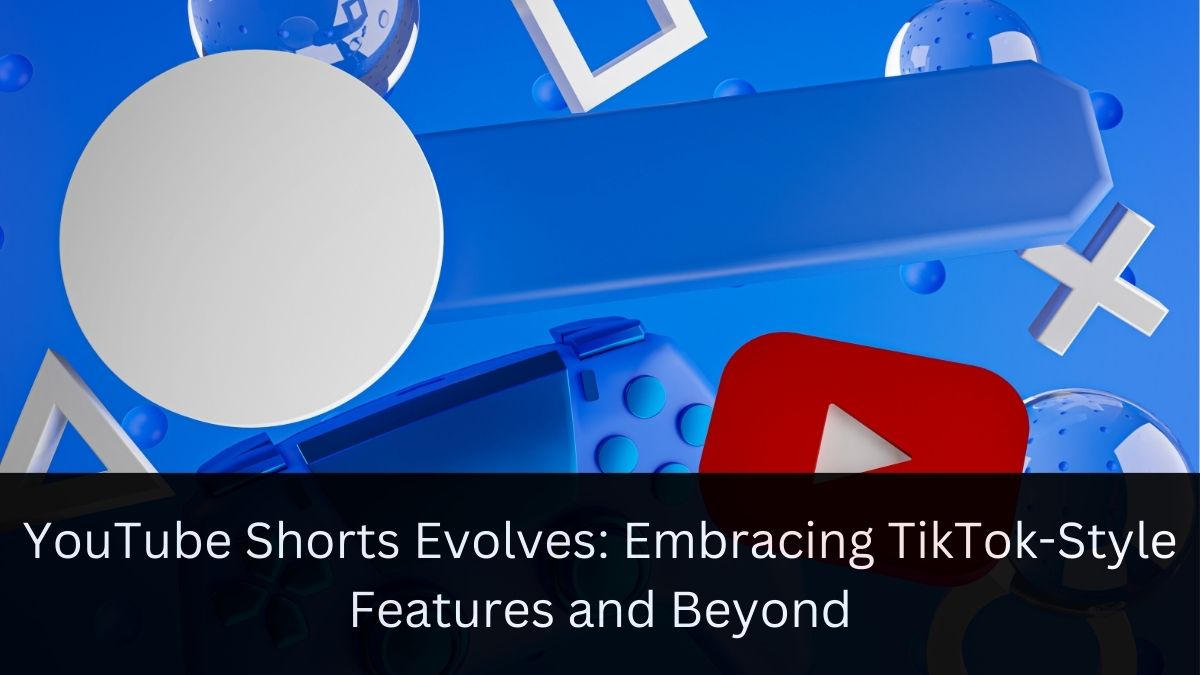Tech
YouTube Shorts Evolves: Embracing TikTok-Style Features and Beyond

In the ever-changing landscape of social media and video content, YouTube Shorts is making waves with its latest update. The platform, known for its short-form vertical videos, is now introducing a suite of new features that bear a striking resemblance to those popularized by TikTok. This move signifies YouTube’s commitment to staying competitive in the fast-paced world of bite-sized content creation.
The Rise of Artificial Voiceovers
A Familiar Sound in a New Place
One of the most notable additions to YouTube Shorts is the introduction of text-to-speech video narration. If you’ve spent any time on TikTok, you’re likely familiar with the somewhat robotic voices that often accompany promotional content or provide narration for videos. These artificial voiceovers have become a staple of the TikTok experience, and now they’re making their way to YouTube Shorts.
As someone who’s dabbled in content creation, I can attest to the convenience of these voiceovers. They’re particularly useful when you want to add narration but don’t want to use your own voice, whether due to shyness, accent concerns, or simply preferring a different sound.
How It Works
The process for adding these voiceovers in YouTube Shorts is remarkably similar to TikTok’s implementation. After creating text for your video, you’ll notice a new “add voice” icon in the upper-left corner of the screen. Tapping this icon allows you to choose from a selection of artificial voices to narrate your text.
Currently, YouTube offers four distinct voices to choose from. While this is a start, it’s worth noting that TikTok boasts a significantly larger selection of voices. As a content creator, I’m hopeful that YouTube will expand its voice options in the future to provide more variety and personalization.
Auto-Generated Captions: A Step Towards Accessibility
Captioning Made Easy
In addition to artificial voiceovers, YouTube Shorts is rolling out auto-generated captions. This feature is a game-changer for creators who want to make their content more accessible without the need for third-party apps like CapCut.
As someone who values inclusivity in content creation, I’m particularly excited about this feature. It not only makes the captioning process more streamlined but also encourages creators to think about accessibility from the outset.
Customization Options
YouTube hasn’t forgotten about aesthetics in its pursuit of functionality. The new caption feature allows users to customize the look of their captions using a variety of fonts and colors. This level of customization ensures that creators can maintain their visual brand while still providing accessible content.
Minecraft Meets YouTube Shorts
Gaming-Themed Backgrounds and Mini-Games
In an interesting twist, YouTube has also introduced a set of Minecraft-themed effects to Shorts. This includes a green screen game-themed background and a mini-game called Minecraft Rush.
As an occasional gamer and frequent YouTube viewer, I find this integration fascinating. It’s a clever way to tap into the massive Minecraft community and potentially attract a new demographic to the Shorts platform.
The Convergence of Video Platforms
A Trend Towards Homogeneity
The introduction of these features is part of a broader trend we’re seeing across video platforms. There’s a noticeable convergence happening, with each platform adopting features that have proven successful on others.
For instance, while YouTube is incorporating TikTok-style features into Shorts, TikTok has been gradually increasing its maximum video length, inching closer to YouTube’s territory. This back-and-forth adoption of features creates an interesting dynamic in the social media landscape.
The Impact on Creators and Viewers
From a creator’s perspective, this convergence can be both a blessing and a challenge. On one hand, it allows for more versatility in content creation across platforms. On the other, it may lead to a sense of sameness that makes it harder to stand out.
As a viewer, I’ve noticed that the lines between platforms are becoming increasingly blurred. The unique identities that once clearly distinguished YouTube from TikTok or Instagram are fading, replaced by a more homogeneous video experience across the board.
The Strategy Behind the Changes
YouTube’s Push for Short-Form Dominance
YouTube’s efforts to enhance Shorts with TikTok-inspired features are clearly paying off. Reports suggest that these changes have been beneficial not only for YouTube but also for a significant portion of its creators.
The platform’s strategy seems to be twofold:
- Retain existing users by offering familiar features from competing platforms
- Attract new users, particularly those who might be more accustomed to TikTok’s style of content
The Broader Implications
This strategy raises interesting questions about the future of social media and content creation:
- Will we see a continued homogenization of video platforms?
- How will creators differentiate themselves in an increasingly uniform landscape?
- What does this mean for platform loyalty and user experience?
Looking to the Future
Potential Developments
As YouTube Shorts continues to evolve, we can likely expect more features that blur the lines between platforms. Some possibilities include:
- More advanced editing tools directly within the app
- Expanded collaboration features for creators
- Integration with other Google services for seamless content creation and sharing
The Challenge of Innovation
While imitation may be the sincerest form of flattery, true innovation will be key for platforms to stand out in the long run. As a user and occasional creator, I’m excited to see what unique features YouTube might introduce that go beyond simply mimicking its competitors.
The latest updates to YouTube Shorts represent more than just new features; they signal a shift in the video content landscape. As platforms converge and borrow from each other, we’re entering an era where the boundaries between different social media experiences are becoming increasingly blurred.
For creators, this presents both challenges and opportunities. The key will be to leverage these new tools while still maintaining a unique voice and style. For viewers, it means a more consistent experience across platforms, but potentially at the cost of variety.
As we move forward, it will be fascinating to see how YouTube Shorts and other platforms continue to evolve. Will we see a return to platform-specific features, or is this convergence the new norm? Only time will tell.
What are your thoughts on these new YouTube Shorts features? Do you see them as a welcome addition or a step towards uniformity in social media? Share your opinions and experiences in the comments below!
